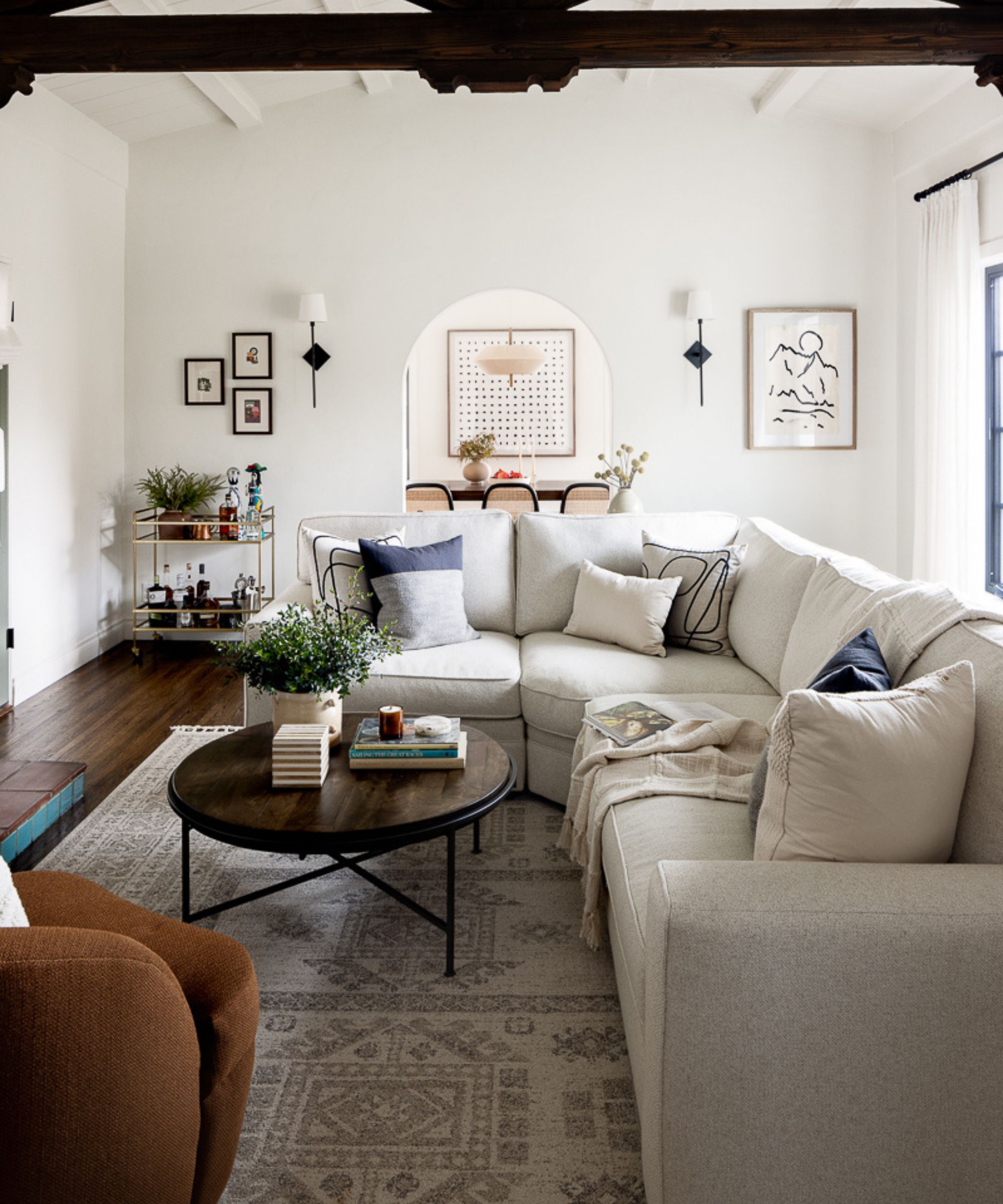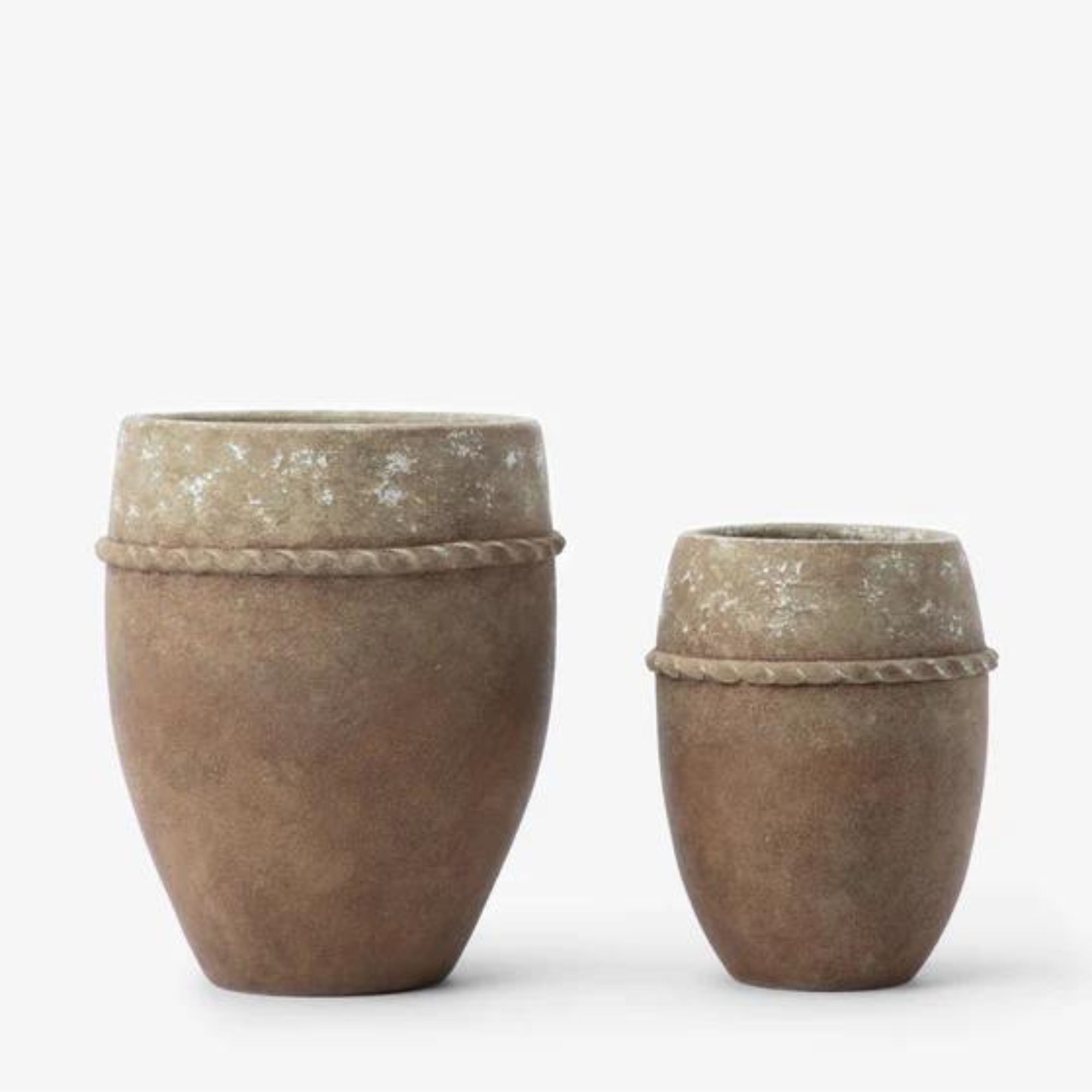Modern Spanish interiors are the perfect transitional style – here's how designers are decorating with this trending aesthetic
Filled with natural materials and organic forms, modern Spanish interior design is having a moment


Modern Spanish interior design is becoming a go-to style for that old-meets-new aesthetic, creating the perfect middle ground between traditional style and contemporary design. A curated blend of classic Spanish style with more modern trends, it's no surprise interior designers are happy to see it gaining traction.
Whether your interior design style leans more traditional or contemporary, colorful or neutral, modern Spanish interior design tailors beautifully to all manner of tastes. With its warming color palette and call for decor both new and vintage, it's a design aesthetic to which you can add a personal touch.
If you're reintroducing original charm to a Spanish home or simply wish to add a European flair to your home, we've asked interior designers how they like to introduce modern Spanish interior design to a scheme.
What is modern Spanish interior design?

As its name suggests, modern Spanish interior design blends traditional Spanish design with modern style. The classic colors are still used, but often more muted and mixed with neutral hues, while design elements feature a more contemporary finish.
'Spanish modern interiors usually consist of a warm, streamlined color palette with more contemporary furnishings and light fixtures than Spanish revival interiors. ,' says Mollie Ranize, founder and lead interior designer at Dmar Interiors.
'Pulling off the strongest Spanish modern style is possible when the home is either true Spanish architecture, or a newly constructed home in the same vein. Then selecting the right soft goods with interesting shapes and warm wood furniture without too many traditional details rounds everything out,' she adds.

As with all of the Spanish-inspired interior design styles, modern Spanish interiors focus on architecture and materials. 'Certain elements lend themselves to Spanish Architecture – arches, stucco and terracotta, the use of natural materials, wood beams, and iron,' explains interior designer Anja Michals.
Design expertise in your inbox – from inspiring decorating ideas and beautiful celebrity homes to practical gardening advice and shopping round-ups.
'Keeping the existing architecture, but injecting modern elements, like new cabinetry and tile creates a more modern vibe that still lends itself to the interiors but makes it more updated,' she adds.
This style can work in homes traditional and modern – authentic Spanish homes can be updated with contemporary elements, while newer spaces can introduce character with the Spanish influences and classic details.
Why is modern Spanish interior design trending?

While Spanish-style homes have always been sought-after, the new, modernized interpretation has been trending recently, and for good reason. 'I'm seeing a desire for warm and comfortable environments, which modern Spanish interiors tend to provide,' says Mollie.
'With various lighting sources, many light surface finishes, and warm wood tones on floors and ceilings, these interiors tend to feel bright and airy while still maintaining a cozy vibe. Arches also also very back, and help soften walls and rooms,' she adds.
Modern Spanish interiors also lean into the collected style that has dominated interior design trends so far this year. These spaces are warm and lived-in – the fact that they aren't overly curated and have a lived-in feel makes them attainable and inviting.
'The Spanish home proves to always be collected and cozy and I think people are gravitating to that right now. Earth tones and rich hues are popular as well. Mixing different textures and materials and having the right balance is what makes a home,' adds Anja.
How to decorate with modern Spanish interior design
1. Mix different textures and finishes

Introducing a blend of textures is key to defining modern Spanish interiors from more traditional interpretations. While classic Spanish design favors dark woods, mixing in some lighter finishes creates a more modern feel to a scheme.
'My favorite thing to do is mix textures in a room. A dark walnut side table, with a lighter wood in the room, or adding rattan, cozy fabrics, and collected objects such as ceramics,' says Anja.
In this dining room, a light wood table had been paired with rattan chairs, while and dark console table adds a deep contrast in the space. Used together, the space feels collected rather than perfectly matching, creating a more authentic modern Spanish scheme.
2. Decorate with an earthy color palette

Modern Spanish interior design calls for earthy colors and softer shades of traditional Spanish hues. While in other Spanish-style spaces, you might expect to see bold red tones, this more modern design style introduces colors to soften the space and add a light, airy atmosphere.
'Earthy colors like greens, rusts, terracotta, and soft shades of tans and browns are usually present when developing the perfect Spanish modern scheme. However, as long as the patterns and scale of the pieces (like tile) give a nod to Spanish design, colors like blue can easily work as well,' explains Mollie.
3. Add a mix of contemporary and vintage furniture

Introducing comfort and coziness is key when choosing furniture for a modern Spanish scheme. 'In general, comfortable furniture is a great place to start with any interior, but when thinking about a Spanish modern home, starting with a large, soft, linen sectional is usually a given,' suggests Mollie.
'Most Spanish architecture incorporates a fireplace surround, but they don't always allow the working fireplace to be on the same wall due to the design of the fireplace structure or mantle. By using a large neutral sectional, you can create seating that accommodates more than one focal point,' she adds.
Don't be hesitant to decorate with vintage pieces, too. This is a great way to offer a nod to traditional Spanish style in a nuanced way. Anja suggests opting for furniture made from 'natural materials like reclaimed wood, stone, or iron – mixed with more contemporary furniture that is also cozy and clean.'
4. Create architectural interest

Certain architectural and design features are core to modern Spanish interior design. While some can't be added where they aren't authentic, others can be easily introduced.
'An ideal Spanish modern space will incorporate soft arches, wood ceiling beams or details, medium to dark wood flooring, and softly textured walls with creamy white paint,' explains Mollie.
Whether you have exposed wooden ceiling beams will depend on the style of your home, but elements such as arches and dark wood flooring can be introduced to any scheme relatively easily.
5. Make a fireplace the focal point

One thing almost all modern Spanish homes have in common is a statement fireplace. Not only does it add a feeling of coziness to a room, but it also creates a wonderful focal point.
'If you can address the fireplace, that's such a strong way to make a Spanish modern focal point. The fireplace can either be original or new with a nod to Spanish design and when paired with balanced furniture and decor, it can be a talking point,' says Mollie.
This has been done in this living room, where a sectional and accent chair has been arranged to curve around the fireplace, making it the focal point for anyone in the room.
6. Introduce handmade and wooden decor

Natural materials and organic forms are very typical of modern Spanish style – think wooden sculptures, handmade pots, and cotton upholstery. The colors here remain neutral or have a muted earthy tone.
'Soft goods like upholstery and throw pillows are a great place to add warmth and interest by bringing in those earth tones and cozy textures. Wooden pieces and anything handmade also work nicely in this style' says Mollie.
The shelves in this bathroom have been used to display a selection of decorative pieces – organic ceramics, wooden frames, and indoor plants all introduce a natural element to the space.
Modern Spanish interior design is all about blending the traditional charm of Spanish style and introducing modern elements hat feel on-trend today. Unlike other Spanish-inspired interiors, this style can be introduced to properties old and new, and can be embraced in a number of design styles.

I’ve worked in the interiors magazine industry for the past five years and joined Homes & Gardens at the beginning of 2024 as the Kitchens & Bathrooms editor. While I love every part of interior design, kitchens and bathrooms are some of the most exciting to design, conceptualize, and write about. There are so many trends, materials, colors, and playful decor elements to explore and experiment with.


